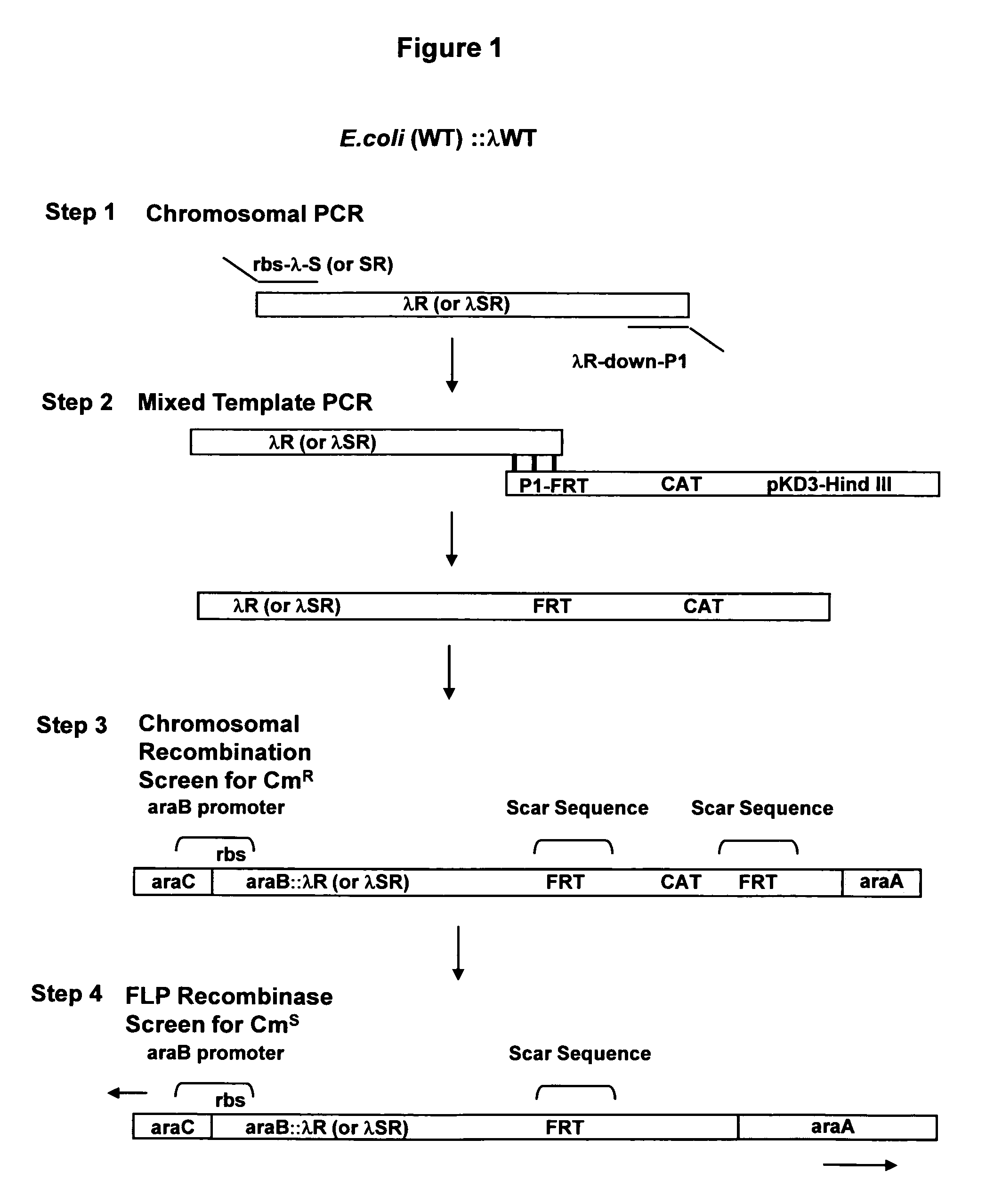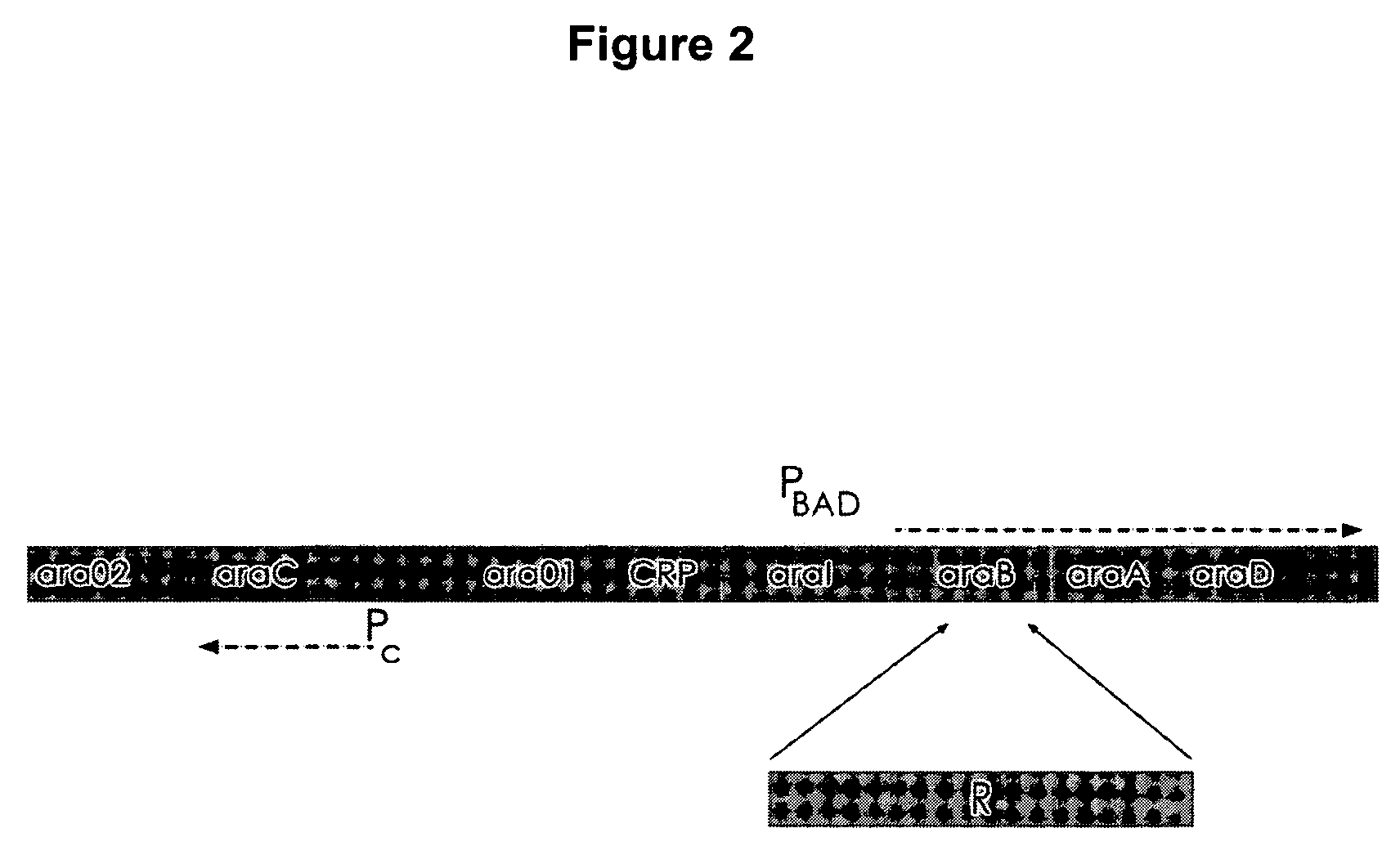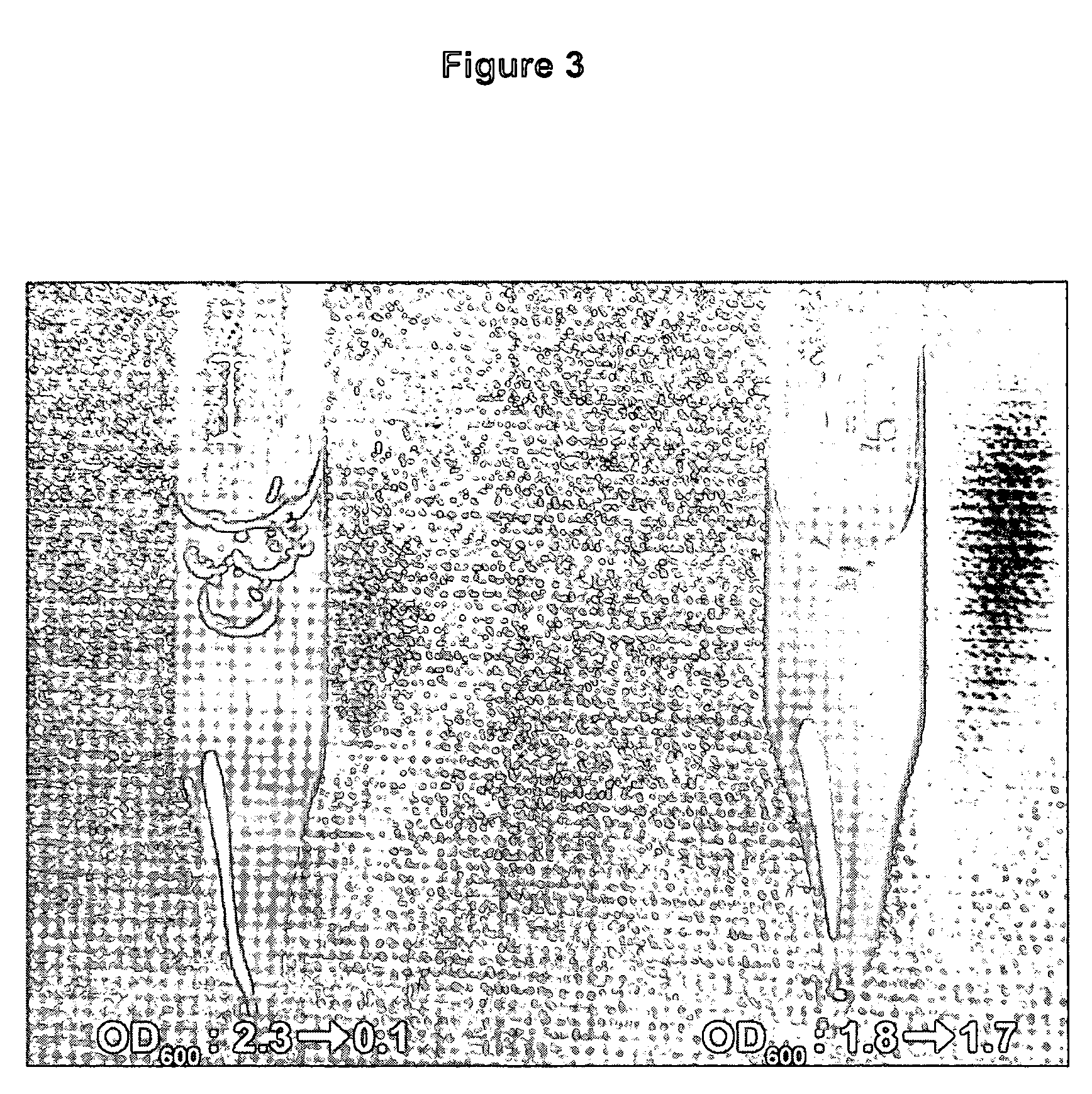Controlled lysis of bacteria
a technology of lysis and bacteria, applied in the field of controlled lysis of bacteria, can solve the problems of limited use of equipment, limited availability of such equipment, and inability to completely solve the limitation of this method, and achieve the effects of improving the efficiency of autolysis, significant autolysis capacity, and optimal autolysis
- Summary
- Abstract
- Description
- Claims
- Application Information
AI Technical Summary
Benefits of technology
Problems solved by technology
Method used
Image
Examples
example 1
Autolysis Phenotype
[0065]The strains of the present invention undergo rapid autolysis after a single freeze-thaw cycle. A culture of E. coli XJa cells (I) and control E. coli JM109 cells (II) were grown in LB for 24 hours (FIG. 3). Autolysis was induced by arabinose addition to about 0.2%, or saturating levels during the growth. An aliquot of about 4 mg of wet cells were resuspended in 1 ml of water, frozen on dry ice, and then incubated for 5 minutes in a water bath at 15° C. The OD600 values were measured for each culture and indicate cell density changes before and after the one freeze-thaw cycle. The XJa strain expressing λ R endolysin showed a dramatic reduction in absorbance from OD600 2.3 to 0.1, demonstrating efficient lysis. In comparison the control strain JM109 showed no significant lysis (OD600 1.8 to 1.7). Similar results are obtained with the XJb strains (data not shown).
example 2
Quantification of Autolysis Phenotype
[0066]The autolysis of E. coli XJa strain was examined to quantify the percentage of lysis. Strains of XJa and parental JM109 were grown in LB media with about 0.2% mM arabinose added at beginning of incubation. The cultures were grown for up to 18 hours and samples harvested and assayed by putting them through a single freeze-thaw cycle (FIG. 4). The chart shows the growth (circle XJa, triangle JM109; solid lines) and extent of autolysis (circle XJa, triangle JM109; dashed lines) of the autolysis strain XJa and parental control JM109 strain. The XJa strain expressing λ R endolysin showed that more than 75% of cells lysed compared to less than 5% for the control JM109 strain. In addition the growth of the XJa strain is only slightly reduced compared to the parental JM109 control. Similar overall results are obtained with the XJb strains (not shown).
example 3
Removal of Antibiotic Marker Gene
[0067]XJa and XJb strains that are CmR and that met the diagnostic PCR criteria that shows the proper genomic structure and that also showed no obvious growth defects can be transformed with pCP20 encoding the yeast FLP recombinase to facilitate removal of the cat gene. This pCP20 plasmid has a temperature sensitive origin of replication (ori) and is lost when cells are grown at 37° C. or higher. Strains can be grown at 30° C. on LB to allow recombination and loss of the cat gene. Single colonies may have to be purified at from 37° C.-42° C. to select for temperature sensitive loss of the pCP20. Selection at 37° C. is not always effective at removing pCP20 and more stringent selection at 42° C. may be necessary to obtain AmpS CmS clones. Candidates can be frozen at −70° C. for further study. Representative strains that have removed the cat gene for XJa and XJb are preferred embodiments of the present invention.
PUM
| Property | Measurement | Unit |
|---|---|---|
| temperature | aaaaa | aaaaa |
| temperature | aaaaa | aaaaa |
| volume | aaaaa | aaaaa |
Abstract
Description
Claims
Application Information
 Login to View More
Login to View More - R&D
- Intellectual Property
- Life Sciences
- Materials
- Tech Scout
- Unparalleled Data Quality
- Higher Quality Content
- 60% Fewer Hallucinations
Browse by: Latest US Patents, China's latest patents, Technical Efficacy Thesaurus, Application Domain, Technology Topic, Popular Technical Reports.
© 2025 PatSnap. All rights reserved.Legal|Privacy policy|Modern Slavery Act Transparency Statement|Sitemap|About US| Contact US: help@patsnap.com



